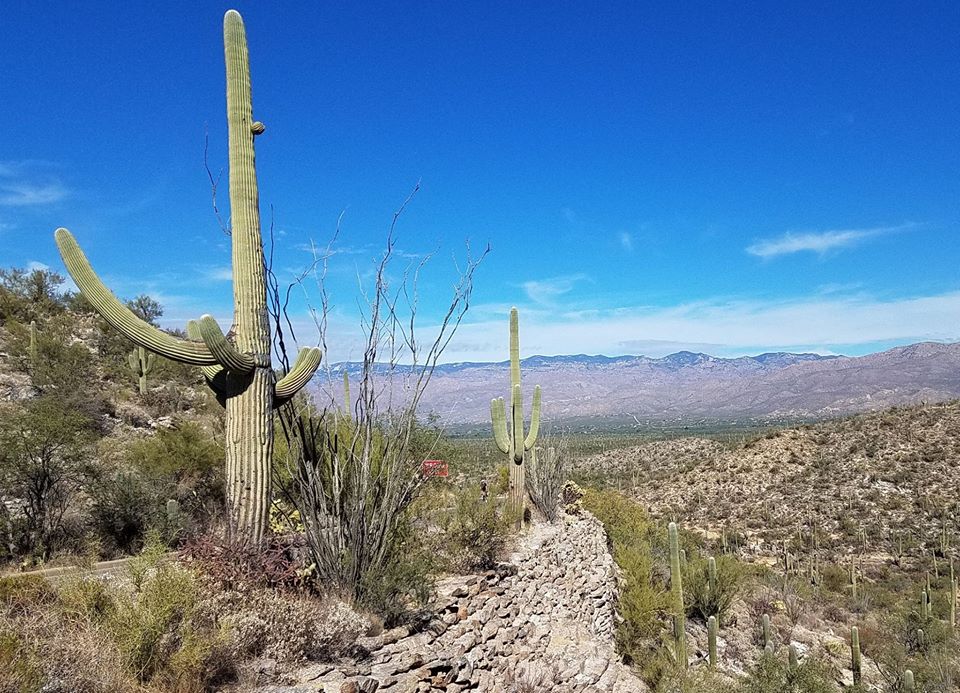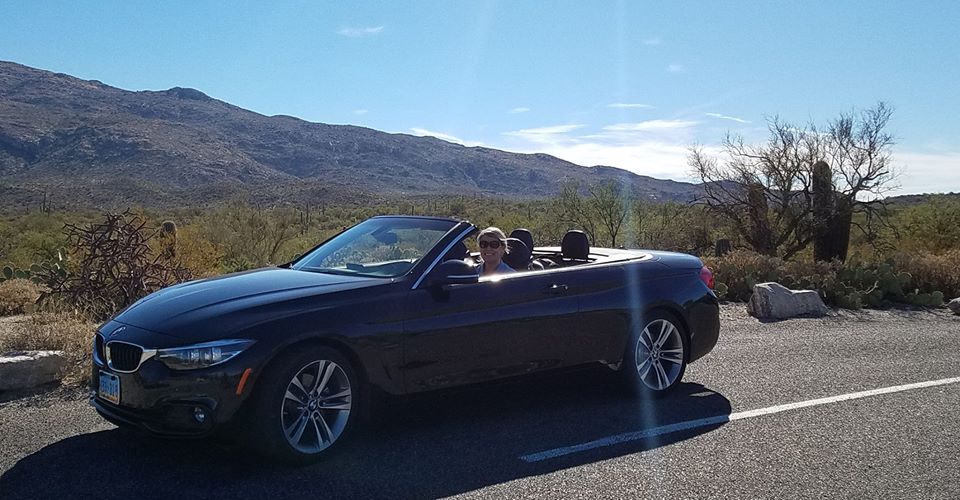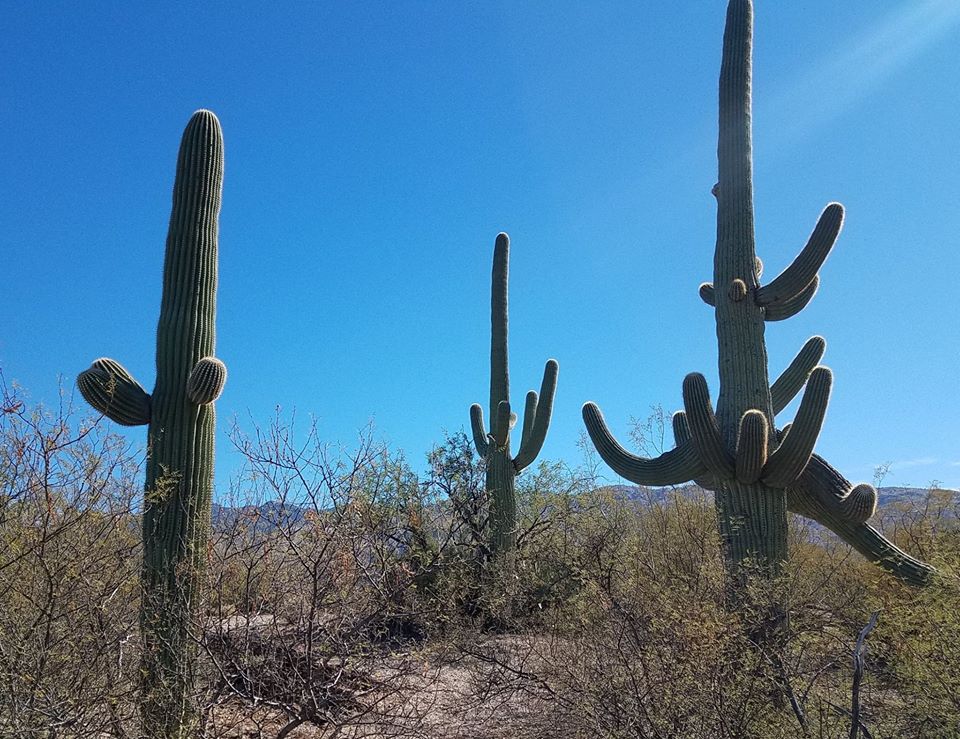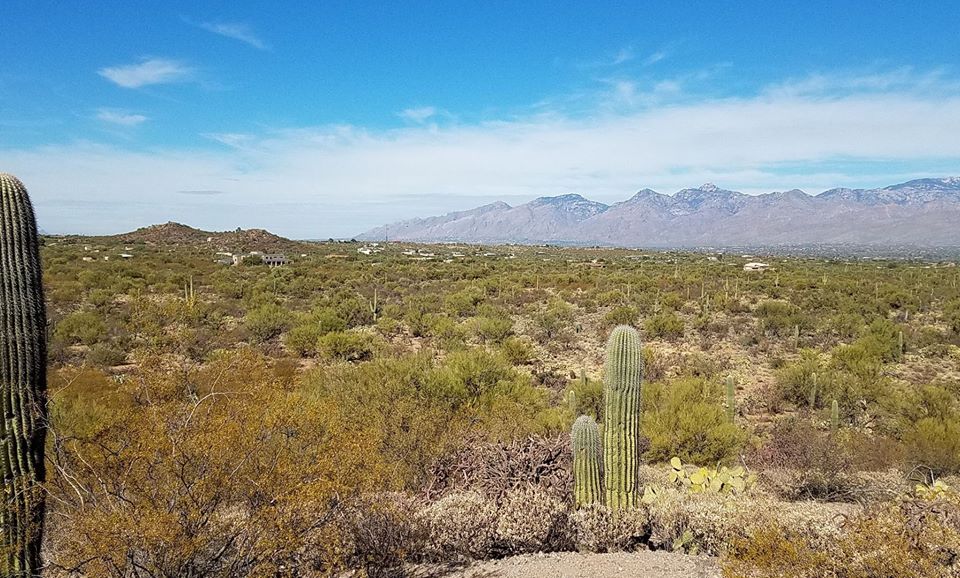Think of forests and most of the time the picture that comes to mind is shady galleries of spreading branches. But the sunny saguaro lands also are forests. One of the thickest of these is on the land of the Saguaro National Park near Tucson Arizona. There are miles of hiking trails, but we were not so rich either in ambition or time, so we took the eight-mile driving loop, stopping at the various places of interest and walking the short ecology trial. We had a nice convertible rental car, so we could enjoy the views from all angles even when moving.
When this park was established as a National Monument in 1931, the saguaro were thick and close together. That is what impressed the founders of the park, who thought that this place had been like that for centuries and should remain that way in perpetuity.
Unfortunately, there was a cold snap in 1937 and again in 1962 and the saguaro started to die off. Since the cactus did not die immediately, scientists did not immediately understand that saguaro will often die if temperatures drop below freezing for more than twenty hours and tried to figure out if some sort of unknown “cactus blight” was the cause. There were dire predictions that if current trends continued, the saguaro would be extirpated by 1990.
It was the cold and the thick cactus forest was the result of unusually warm weather in the late 1800s that had allowed greater survival. The more normal cold weather was just cutting them back. A more serious problem seemed to be recruitment of new saguaro. Scientists could find almost no young cactus among the old ones. So, even absent a “saguaro blight”, w/o new cactus the cactus forest had no future.
Saguaro have specific needs to get established. It has to be a relatively moist year and the little saguaro must be under a “nurse tree”, most often a palo verde, ironwood or mesquite tree, that protects them from drying out or from very hard rain. They also need not to be trampled. When cattle graze, they trample the young saguaro. When the authorities removed the cattle, and protected the nurse trees, the saguaro started to come back. There are now many little saguaros among the big old ones.
Saguaro grow only in the Sonoran Desert and only less than 4000 feet above sea level. They grow slowly and do not get their first “arm” until at least fifty years and maybe 100 when there is less rain. They may live to be around 200 years old. They are easily damaged and do not regenerate very easily. As the urban areas of Phoenix and Tucson expand, they are moving into saguaro country. Saguaro are icons of the old Southwest. Home owners love saguaro on their property. Let’s hope this love helps with protection.
So far, this is less a story of loss and more one of regeneration. Hope it continues.
My first picture shows some of the vistas, as does picture #4. Between is me in a “cowboy pose” and CJ in the rental car. Last picture is low density housing creeping into the saguaro. This is not all bad news. Park officials are working with home owners to maintain and enhance conditions for the survival of the saguaro ecology.





